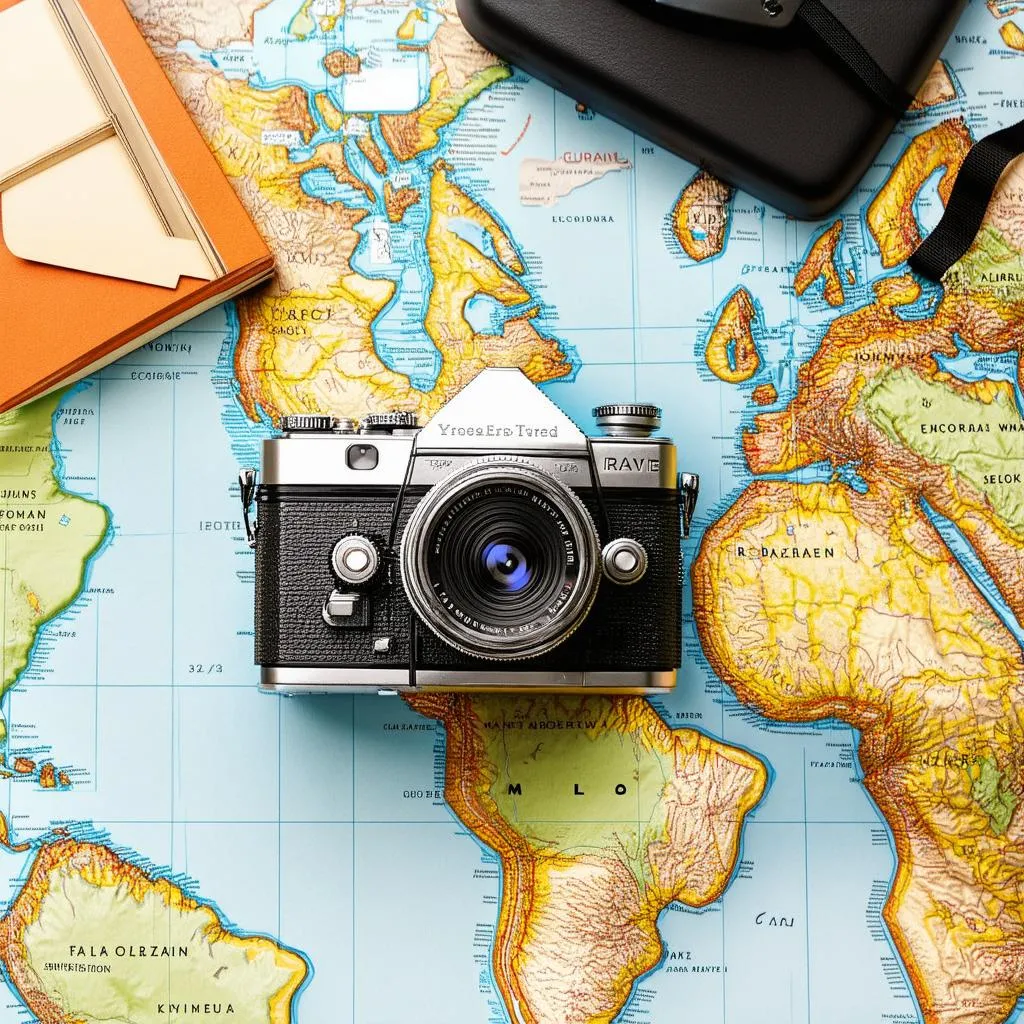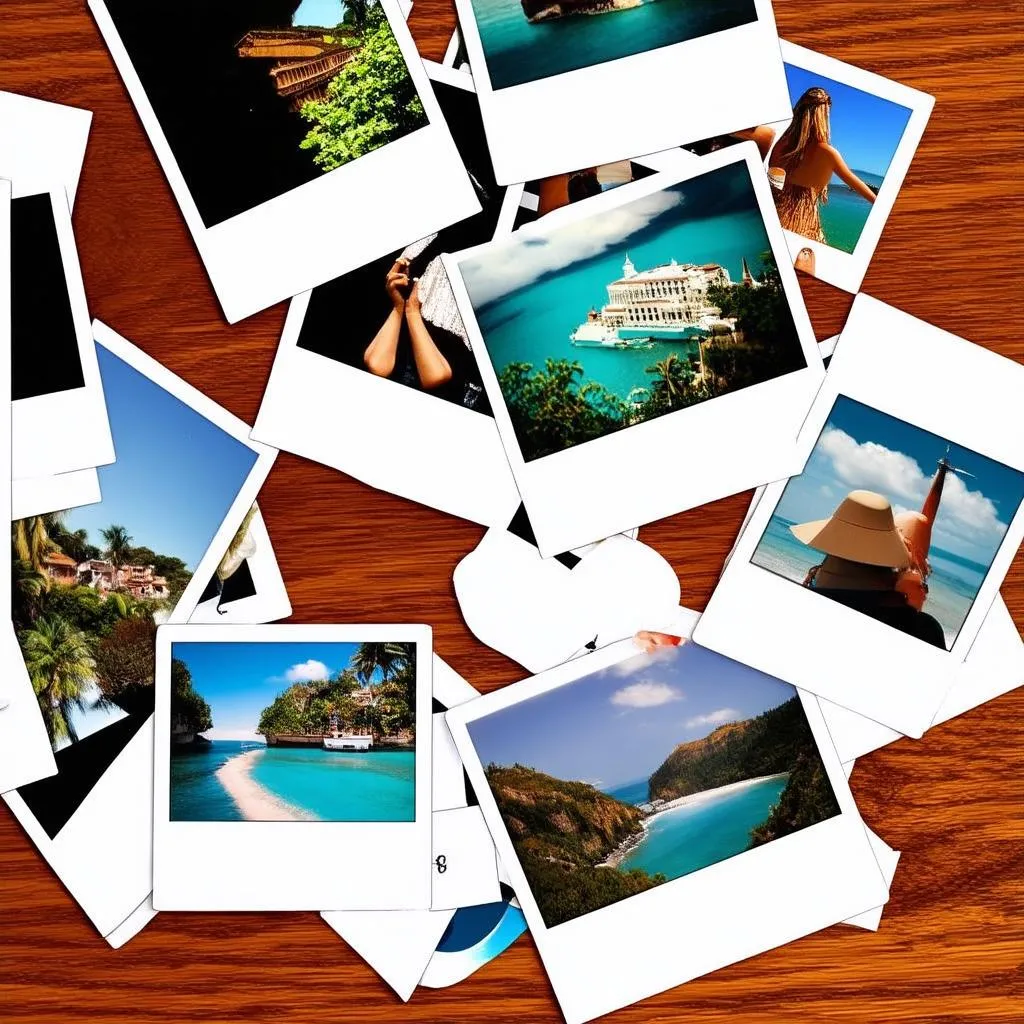Remember the days when anticipation hung in the air as you waited for your vacation photos to be developed? The tangible thrill of holding a physical photograph, the imperfections adding to its charm? Traveling with a film camera brings back that magic. It’s a slower, more deliberate way of capturing your adventures, forcing you to be present in the moment and consider each shot carefully. But how do you navigate the modern world with this vintage companion? Let’s dive into the beautiful world of film photography while traveling.
Preparing Your Analog Arsenal: Packing Essentials
Before you even think about snapping that first shot in front of the Eiffel Tower or amidst the bustling markets of Marrakech, proper preparation is key.
Choosing Your Weapon of Choice: The Film Camera
Your choice of camera depends entirely on your needs and comfort level.
- Point-and-shoot cameras: Perfect for beginners, these offer simplicity and ease of use. Imagine yourself exploring the hidden alleyways of Hoi An, Vietnam, capturing candid moments without the fuss of complex settings.
- SLR cameras: Offering more creative control, these are ideal for experienced photographers who desire greater control over their images. Picture yourself framing the perfect sunset over the Santorini caldera with precise settings.
- Rangefinders: These cameras are known for their quiet operation and compact size, making them ideal for street photography. Imagine yourself discreetly capturing the vibrant street life of Tokyo with a silent click.
Stocking Up on Film: A Variety is Key
Just like a painter chooses their palette, you’ll want a variety of film stocks for different situations and lighting conditions.
- Color negative film: A versatile choice for everyday shooting, offering a good balance of affordability and quality.
- Slide film: Provides vibrant colors and exceptional sharpness, perfect for landscapes and brightly lit scenes.
- Black and white film: Ideal for capturing timeless images with dramatic contrast, especially striking for portraits and architectural shots.
Don’t forget extra batteries for your light meter (if your camera requires one)! Nothing is worse than being caught off guard with a dead battery in a crucial moment.
Packing for Protection: Safeguarding Your Gear
- Camera bag: Invest in a sturdy and comfortable camera bag to protect your precious cargo from bumps, dust, and the elements.
- Plastic bags: These are lifesavers when it comes to protecting your gear from unexpected rain or splashes, especially important if you’re exploring tropical destinations like Bali.
Remember, John Miller, author of “The Analog Traveler,” advises, “Packing light is crucial for any journey, but with film photography, it takes on a whole new meaning. Each piece of equipment should serve a purpose and bring you joy.”
Navigating the Airport and Beyond: Security & Storage
Airport Security: Film’s Biggest Hurdle
One of the biggest concerns for film photographers is airport x-ray scanners potentially damaging their film.
- Hand-check your film: Always request a hand-check for your film at security checkpoints. While most modern x-ray machines are safe for film under 800 ISO, it’s better to err on the side of caution.
- Lead-lined bags: These offer an extra layer of protection, especially for higher speed films. However, be prepared to open the bag and show the security personnel its contents.
Storing Your Film: Keeping it Fresh
Heat and humidity can be detrimental to your film’s quality.
- Keep your film cool: Store undeveloped film in a cool, dry place. If you’re traveling to a hot or humid climate, consider keeping it in a portable cooler bag with ice packs.
- Process your film promptly: Don’t wait too long to get your film developed. The sooner you do it, the fresher the images will be.
Embracing the Art of Slow Photography: Tips for Stunning Shots
Traveling with a film camera encourages you to slow down, observe your surroundings, and connect with the essence of a place.
- Seek out the light: Pay attention to the way light falls on your subjects. The golden hour, shortly after sunrise or before sunset, offers magical, soft lighting.
- Compose thoughtfully: Take your time framing each shot. Consider the rule of thirds, leading lines, and negative space to create visually appealing compositions.
- Embrace the unexpected: Don’t be afraid to experiment with different angles, perspectives, and compositions. Some of the most captivating photographs come from unexpected moments.
Developing Your Masterpieces: Finding Labs On the Go
Gone are the days of being limited to your local photo lab. In today’s connected world, you have options.
- Research local labs in advance: Before your trip, research and note down the locations of reputable film labs at your destination.
- Utilize online resources: Websites and apps like Film Lab App can help you locate film developing services worldwide.
Why Choose Film in a Digital World?
In an age of instant gratification, film photography offers a refreshing change of pace.
- Mindful photography: It compels you to slow down, think before you shoot, and appreciate each frame.
- Tangible memories: There’s something special about holding a physical photograph in your hand, a tangible reminder of your travels.
- Unique aesthetic: Film possesses a distinct aesthetic— a certain grain, depth, and character that digital often struggles to replicate.
 Packing for a trip with a film camera
Packing for a trip with a film camera
FAQs about Traveling with a Film Camera
Can I bring film in my carry-on bag?
Yes, it’s always recommended to pack your film in your carry-on luggage to avoid potential damage from x-ray machines used for checked baggage.
Where can I develop my film while traveling?
Many cities worldwide still have film labs. You can find them through online searches, travel forums, or dedicated apps like Film Lab App.
Is it expensive to travel with a film camera?
While the initial investment in a camera and film might seem pricey, the cost can be comparable to digital photography once you factor in printing costs.
How many rolls of film should I bring on my trip?
This depends on the length of your trip and your shooting habits. It’s always better to overestimate and bring a few extra rolls than to run out at a crucial moment.
 Photos from a trip shot on 35mm film
Photos from a trip shot on 35mm film
Conclusion: Embark on Your Analog Adventure
Traveling with a film camera is a rewarding experience. It’s about embracing a slower, more intentional way of seeing the world and creating tangible memories that you can hold onto for years to come. So, pack your bags, load your camera with your favorite film, and embark on a journey filled with photographic adventures. Don’t forget to share your experiences and stunning film photos with us in the comments below!
For more travel inspiration and photography tips, be sure to explore other articles on travelcar.edu.vn.